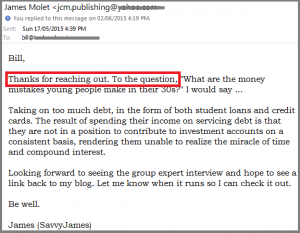Few problems pose more of a threat to an organization’s long-term viability than high turnover. When a company can’t retain its best talent, it must constantly engage in hiring external talent, which can be extremely costly. . Without employee retention strategies, the constant talent churn will make it difficult for organizations to meet its performance targets. goals.
Employee Retention Strategies to Implement Right Now
Offer Competitive Salary and Benefits
While many employee retention techniques focus on addressing issues unrelated to salary, don’t fall into the trap of thinking that providing competitive salary and benefits don’t matter. A Glassdoor survey of hiring managers found that 45 percent of employees cited salary as their primary reason for leaving a position. With so many career resources available today, it’s a safe bet to assume that employees know their value on the job market. If an organization isn’t able to match those expectations in terms of salary or quality benefits that matter (and no, having a ping pong table in the office doesn’t count), it will struggle to retain its most talented employees.
Improve Your Selection Process and Onboarding
Research has found that a shocking 33 percent of employees quit their job within the first 90 days. In most cases, these early departures are the direct result of a flawed selection process. The organization is either failing to identify which candidates are a good fit for their needs and culture or not being completely forthcoming about their expectations for new hires. If the hiring process relies solely upon interviews or the “gut instincts” of a hiring manager, chances are good that the new employee may not possess the skills and characteristics needed to thrive in their new role. Implementing more objective assessments that measure key competencies and behavioral tendencies can help to weed bias out of the selection process.
After a candidate has been hired, it’s important to have a strong onboarding process that eases them into the position. Too often, organizations throw new employees into the fire before they have an opportunity to familiarize themselves with their role and the company. Good onboarding helps to establish expectations, build employee cohesiveness, and instill processes that are critical to business success. Without this direction, employees can become frustrated, resentful, and disengaged, which can ultimately lead to increased turnover.
Request Feedback
While it’s important to give employees feedback regarding their performance, organizations also need to make sure they’re taking the time to listen. If employees don’t feel like their ideas, concerns, or problems are being heard, they quickly assume that the company doesn’t care about them and has no interest in what anyone thinks. When people feel like no one is listening, they stop talking and become disengaged from their work.
This is damaging for an organization on a number of levels. First of all, it prevents important issues and innovative suggestions from coming to light. Problems remain unsolved and great ideas that could benefit the company are never proposed. Secondly, employees who don’t think the organization listens to them will be slow to buy-in to change initiatives, respond to team cohesion strategies, or place trust in leadership. Over time, they may also take less accountability for their actions and begin looking for opportunities elsewhere.
Provide Guidance and Development
Professional growth is important for most people, but organizations can easily become comfortable with leaving employees in their existing roles. Failing to invest in employee development, however, often communicates that the company doesn’t value potential. By providing people with the guidance they need to develop their skills and gain new experiences, organizations can show that they’re committed to investing in their own people as a business strategy.
Regular assessments that identify growth opportunities are an important part of developing a succession pipeline that helps organizations avoid crippling talent gaps. By providing high-potential employees with the development resources they need to grow into effective leaders, companies can strengthen their leadership bench and give people a roadmap for their future within the organization.
Promote a Healthy Work/Life Balance
Organizations often lose sight of the fact that employees are human beings with lives outside of the workplace. Since the performance incentives of management are often directly tied to productivity, it’s easy for leaders to begin pushing people to work longer hours and take additional tasks home with them. While it’s possible to get a temporary performance boost with this approach, it will quickly cause employees to burn out and become disengaged. At best, their work quality will deteriorate as they focus on simply getting things done rather than producing good results. At worst, their frustration will cause them to quit and seek a more accommodating workplace elsewhere.
Companies can encourage a healthier work/life balance by establishing clearly defined work hours, implement policies and expectations for working over the weekend, and roll out work-from-home arrangements that allow people to tend to their personal needs without having to use their allotted vacation time.
When an organization is struggling with a high turnover rate, the first question it should ask is what is it doing to drive talent away. In many cases, there are easy solutions that can be implemented quickly to encourage employees to reengage and remain in their current roles. Shifting an organization’s culture to better accommodate the needs of employees is sometimes difficult, but it’s a critical step in setting the company up for long-term business success.
Business & Finance Articles on Business 2 Community
(70)



